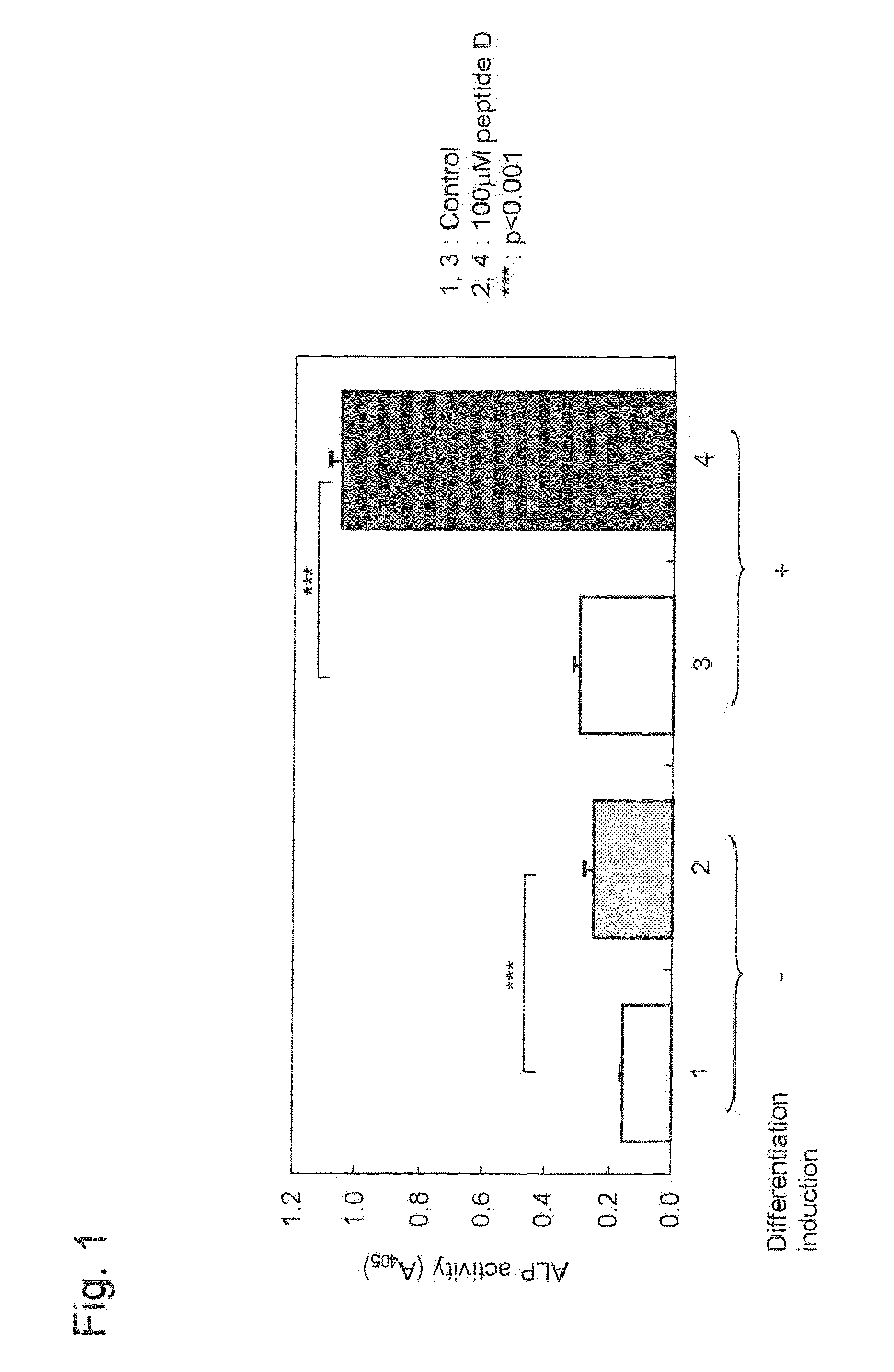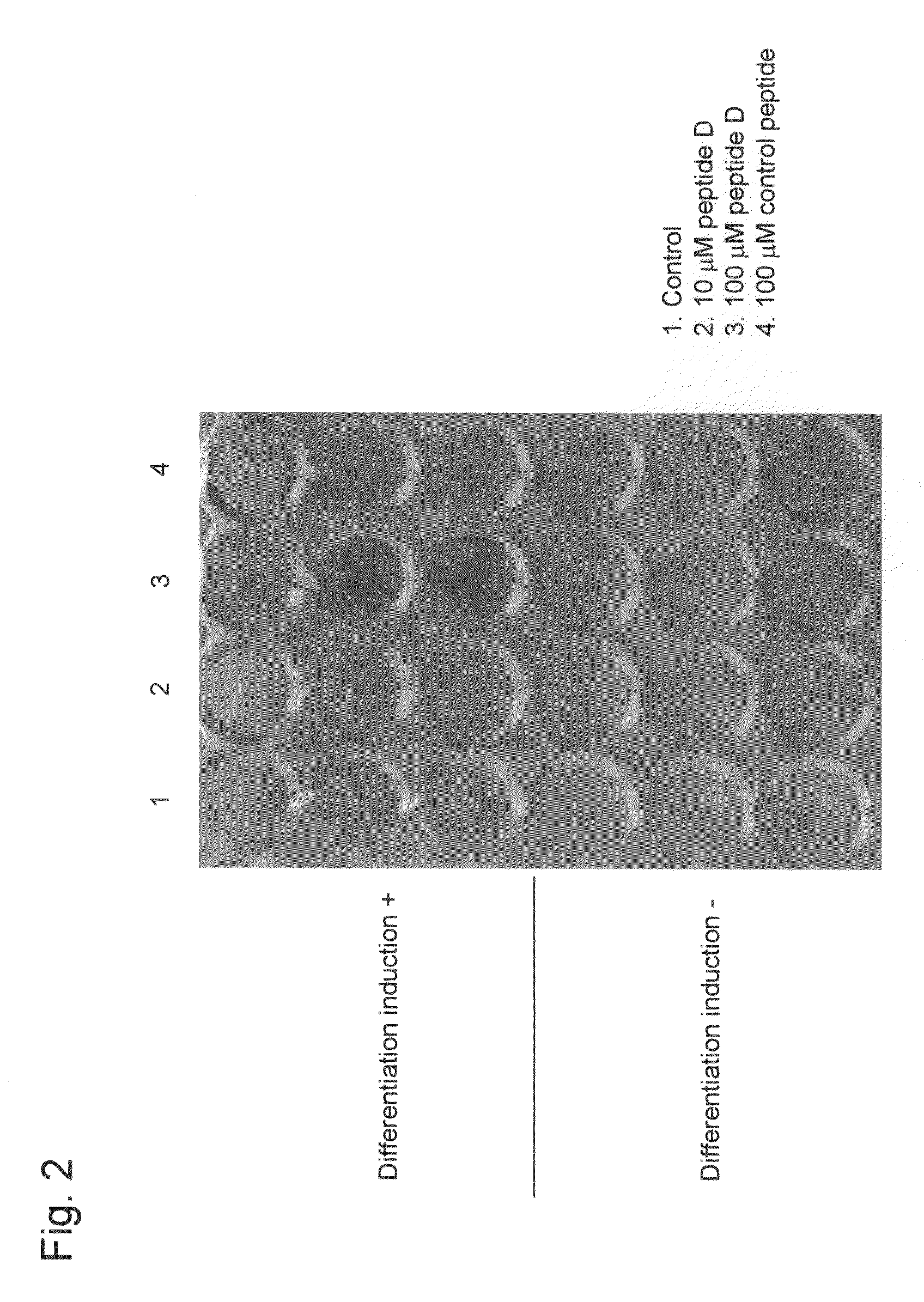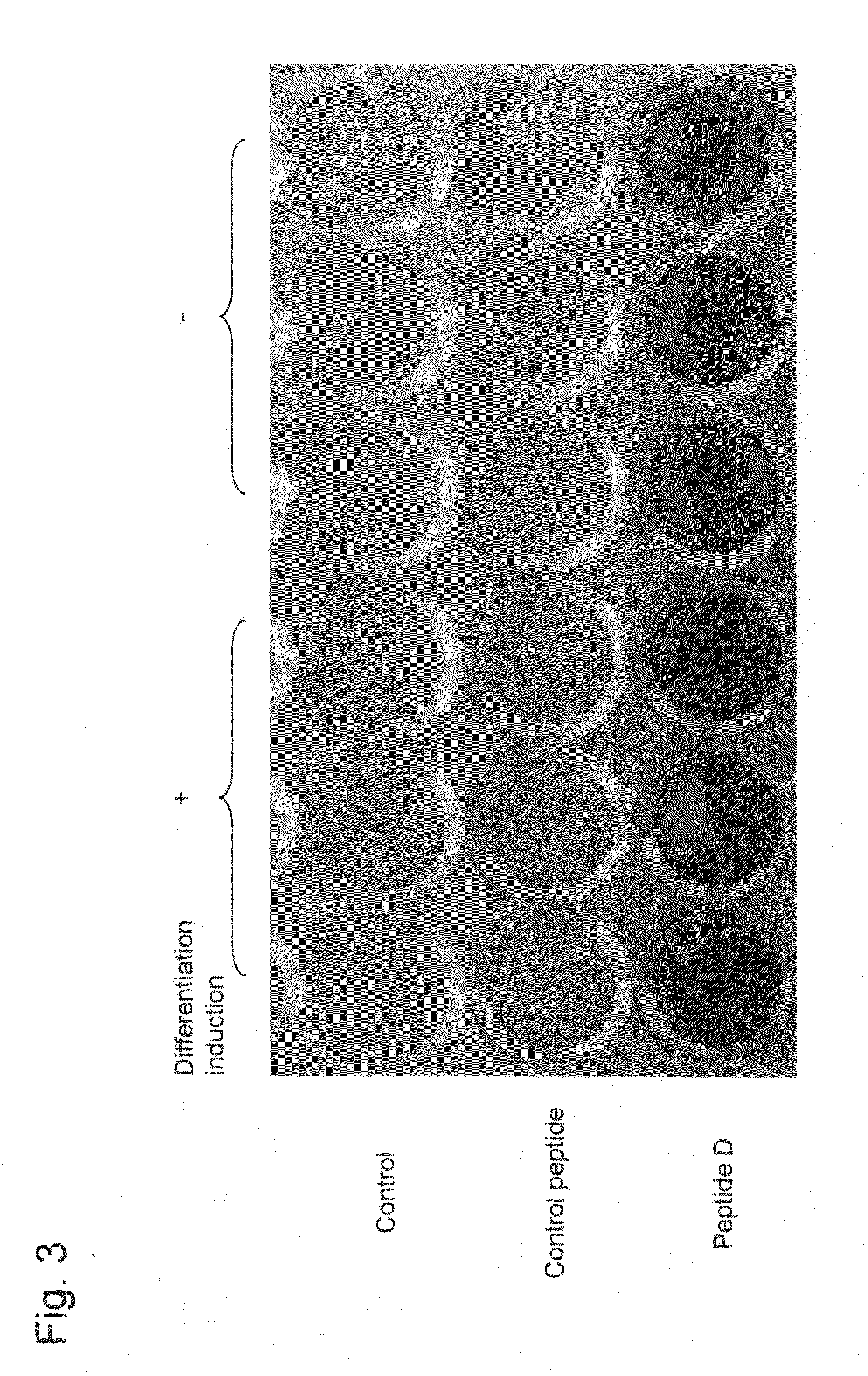Novel bone mass increasing agent
a bone mass and increasing agent technology, applied in the field of osteogenesis enhancement, can solve problems such as bone mass increase, and achieve the effect of increasing alp activity
- Summary
- Abstract
- Description
- Claims
- Application Information
AI Technical Summary
Benefits of technology
Problems solved by technology
Method used
Image
Examples
example 1
Differentiation of Human Mesenchymal Stem Cells
Reagents
[0124]A synthetic peptide was used as a reagent for experiments. Synthetic peptide D is a peptide comprising the amino acid sequence represented by SEQ ID NO: 7, which is a cyclic peptide consisting of 9 amino acids and comprising two cysteine residues binding to each other via a disulfide bond. It has been reported that synthetic peptide D binds to RANKL (Aoki et al., J Clin Invest 116: 1525, 2006). As a control peptide, a synthetic peptide lacking the above function was used.
Culture Cells
[0125]Human mesenchymal stem cells were purchased from Cambrex Corporation. Maintenance medium produced by Lonza was used for subculture.
Differentiation of Human Mesenchymal Stem Cells
[0126]Human mesenchymal stem cells were seeded on a 96-well plate (1×103 cells / well) (Nunc) and a 48-well plate (2.4×103 cells / well) (IWAKI). After 24 hours, the culture supernatant was removed from each plate and an osteoblast differentiation induction medium (L...
example 2
Calcification of Human Mesenchymal Stem Cells
ALP Staining
[0130]Peptide D was added at a concentration of 300 μM during differentiation. On Day 7, cells were fixed with a 10% neutral buffer formalin solution, followed by re-fixation with an acetone / ethanol solution.
[0131]A stain solution (500 μL) prepared with the composition described below was added to the cells, followed by incubation at 37° C. for 10 minutes, washing with water, and drying.
(Composition of Stain Solution)
[0132]Naphthol AS-MX phosphate (SIGMA): 5 mg
N—N-dimethylformamide (Wako): 0.5 mL
0.1 M Tris-HCl (pH 8.5): 50 mL
[0133]Fast blue hemi-salt (SIGMA): 30 mg
[0134]On Day 21 after differentiation, the cells were washed with PBS, followed by fixation with a 10% neutral buffer formalin solution.
[0135]The cells were washed with water after removal of the fixative solution. A 1% alizarin red S stain solution (Nacalai) (150 μL) was added thereto. The plate was left at room temperature for 3 minutes. Ther...
example 3
Differentiation of a Mouse Osteoblast Precursor Cell Line (MC3T3-E1)
Culture Cells
[0137]MC3T3-E1 (subclone No. 4) cells of a mouse osteoblast precursor cell line were purchased from ATCC.
Mouse Osteoblast Precursor Cells (MC3T3-E1)
[0138]Cells mixed with 10% FBS+αMEM (GIBCO) were seeded on a 96-well plate (8×103 cells / well) and a 48-well plate (2×104 cells / well). The culture supernatant of each plate was replaced with 10% FBS+αMEM containing 5 mM β glycerophosphoric acid (SIGMA)+10 μg / mL sodium ascorbate (SIGMA) 48 hours later. Then, the medium was replaced with new medium every 3 or 4 days. As a control, MC3T3-E1 was cultured with the use of 10% FBS+αMEM as a maintenance medium. Upon medium replacement, a peptide was added to each plate at a concentration of 300 μM, ALP activity determination and alizarin red S staining were carried out by the method described in Example 1 on Days 7 and 21.
Differentiation of a Mouse Osteoblast Precursor Cell Line
[0139]In the group to which peptide D (...
PUM
 Login to View More
Login to View More Abstract
Description
Claims
Application Information
 Login to View More
Login to View More - R&D
- Intellectual Property
- Life Sciences
- Materials
- Tech Scout
- Unparalleled Data Quality
- Higher Quality Content
- 60% Fewer Hallucinations
Browse by: Latest US Patents, China's latest patents, Technical Efficacy Thesaurus, Application Domain, Technology Topic, Popular Technical Reports.
© 2025 PatSnap. All rights reserved.Legal|Privacy policy|Modern Slavery Act Transparency Statement|Sitemap|About US| Contact US: help@patsnap.com



